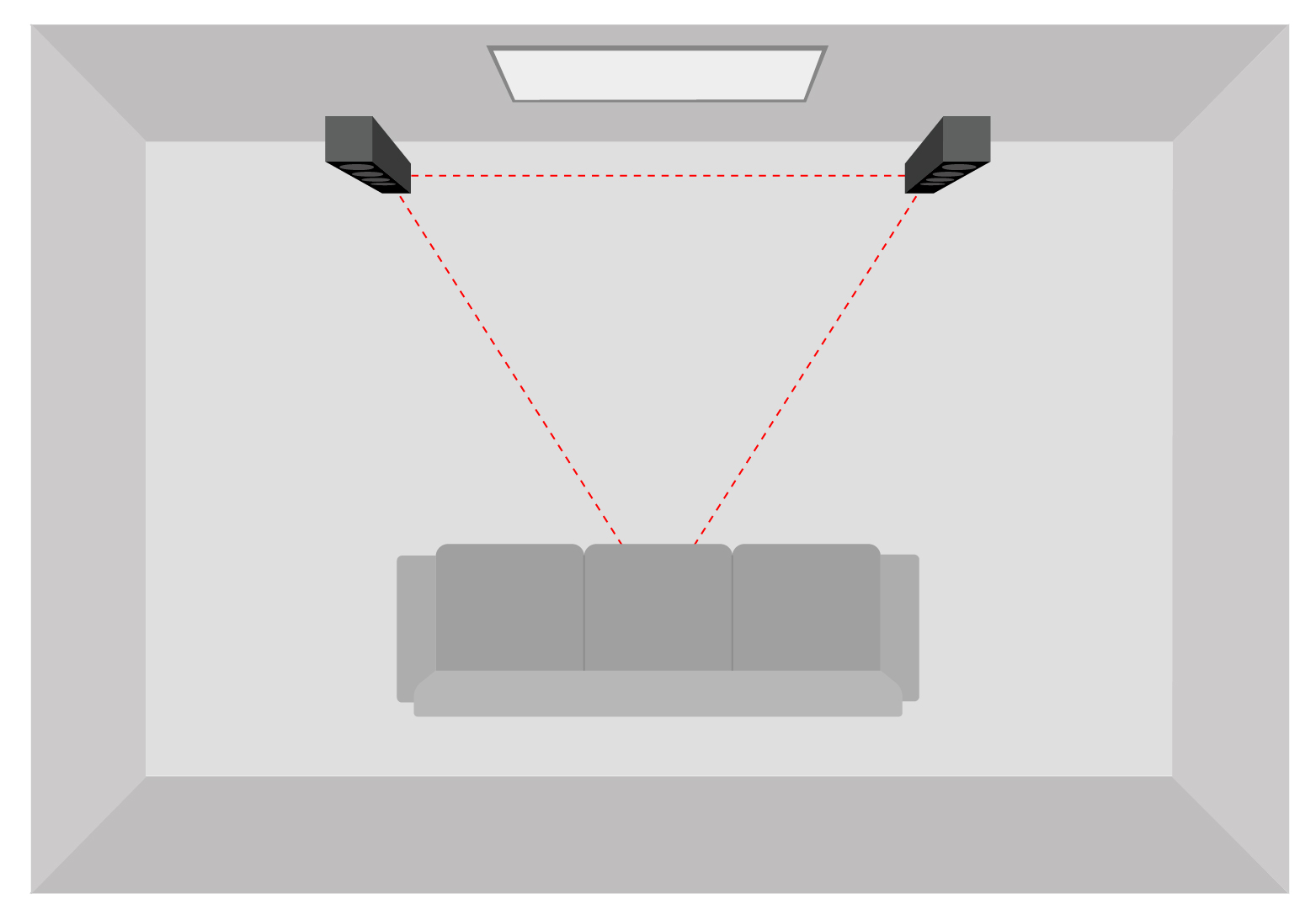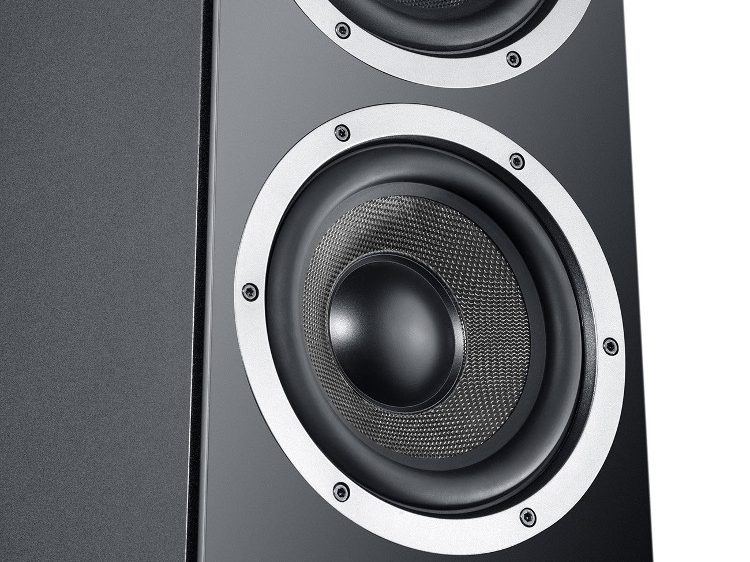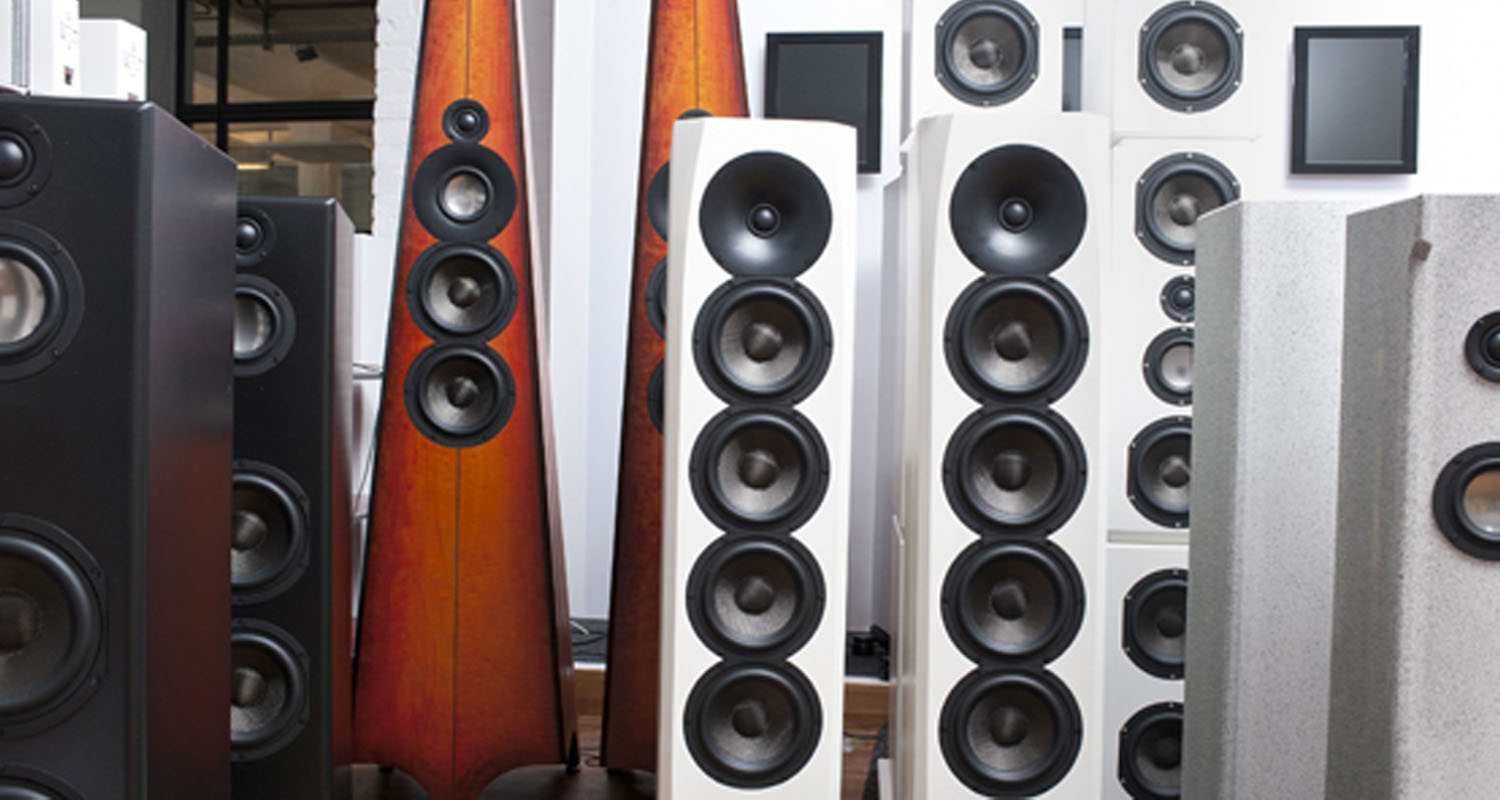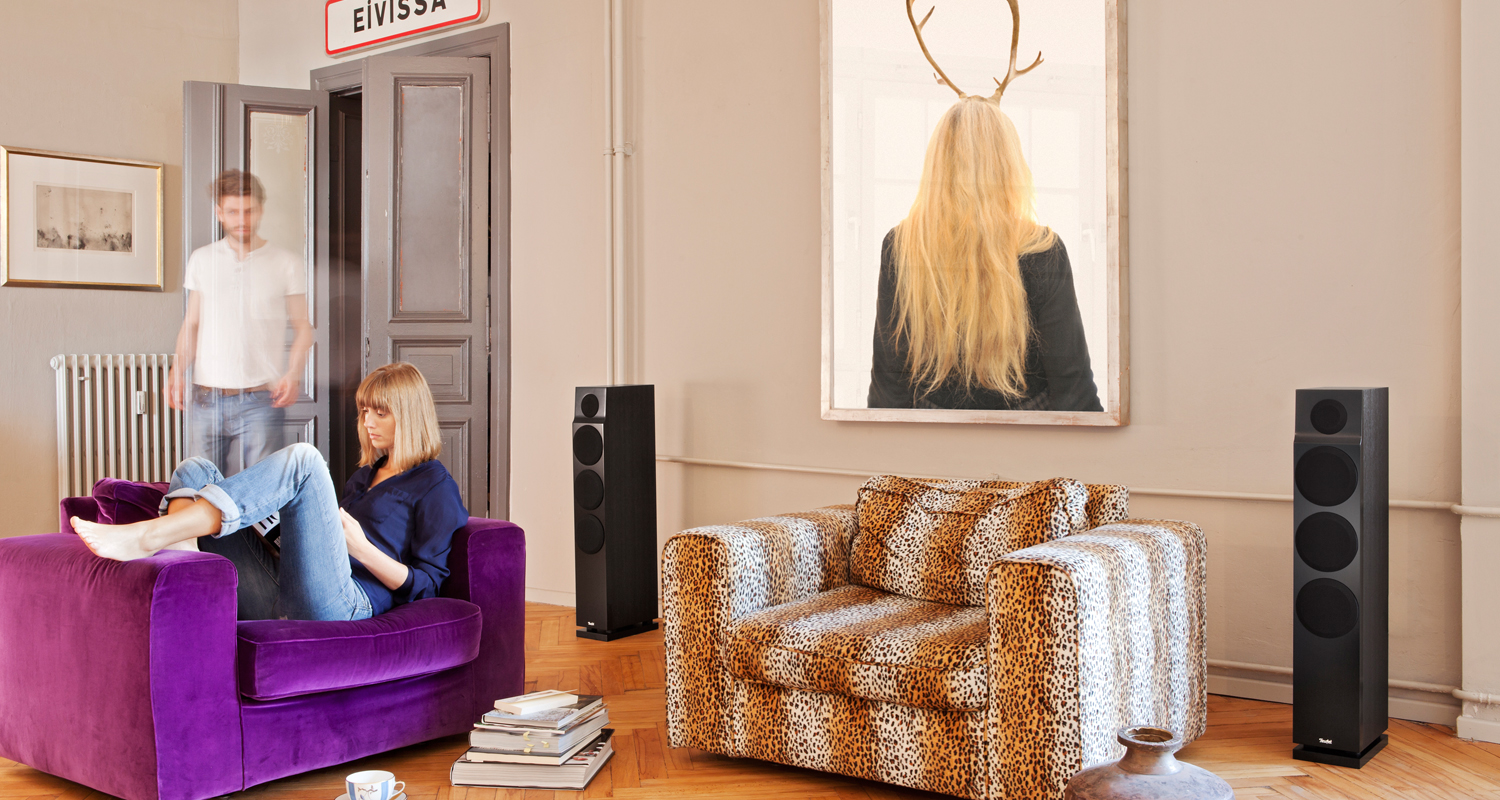The story of audio has changed a lot over the years. But one thing remains the same – stereos. Radio, TV, or even music – regardless of what device we store audio on – we still rely on stereos for the best sound experience.
Why stereophonic sound is still the main go to?
Stereophony refers to techniques for recording and reproducing sound signals that create a multi-directional audio perspective with the help of two or more sound sources.
Stereophony is audio information recorded for two different channels and played back via two sound sources – a loudspeaker on the left and on the right. You might be thinking “why the effort? Wouldn’t one loudspeaker (mono sound) be enough?” This is understandable, after all, even in natural listening situations there is only one sound source for a sound event: a guitar, a singer, a drum set. The explanation of the advantages of stereo sound leads us to so-called psycho-acoustics.
The cause of the phantom sound source
When a stereo set is properly setup, we are actually unable to hear that the sound comes from two different sources. For example, when we hear an electric guitar, we think that the sound is coming from one source, never thinking that it could be coming from more directions. When we hear music from the stereo, it sounds as if the sound is coming from the middle between the two loudspeakers. So, the stereo speakers don’t seem like the obvious sound sources. Experts talk about a phantom sound source. This means that our hearing locates the sound source where there actually is none.
Teufel loudspeakers – stereo of persuasion
[product id=”26075,33025,31012″]
This psycho-acoustic effect is good for sound. The phantom source generated via stereo sounds are much more three-dimensional and natural than mono sound. The recorded voice of a person could be reproduced authentically with a mono loudspeaker. However, when recording an orchestra or a band, this no longer works. They form a large body of sound on stage and mono sound doesn’t recreate this sound anything close to as authentic. Stereo sound and the psycho-acoustic effects create a soundstage perfect for our ears.
Note on multi-channel sound: stereo is the simplest setup for multi-channel sound. For surround sound in home cinema, a 5.1 setup with appropriately coded channels is standard. 3D sound is converted in formats such as Dolby Atmos via high-frequency loudspeakers. It can then be a 5.1.2 set up.
The origins of stereophonic sound and stereo sound
The technical foundations for the recording and playback of two separate audio channels were laid in the 1930s. At that time, the inventor Alan Blumlein had developed an embossing process for vinyl grooves, which is still used today. The first market-ready stereo records were pressed in the 1950s. This was the start for the two-channel sound becoming more and more widespread from the 1960s onwards.
With all the innovations in audio technology of the past decades, stereo has remained a constant as a reproduction method. Despite digitalisation, dual-channel sound is still widespread, for example in radio and television. Even sound bars do not usually deviate from the stereo principle: In the sound bars, a sound stage is basically created via two channels. The sound transducers inside are arranged accordingly and tuned to each other.
Stereo in practice

For stereo speakers to achieve the described sound quality, you need to consider certain aspects when setting them up. The stereo sound unfolds ideally only when the speakers are positioned at the same distance from the listening area and at an angle of 60° – this is known as a stereo triangle. Here you will find detailed installation tips for the stereo triangle and the so-called sweet spot.
Stereos of passion

▶Ultima 40: These floor-standing loudspeakers stand for best stereo tradition. The Ultima 40 has been our most popular floor-standing loudspeakers for years, and in 2018 we carefully revised them. The sound is now even more mature. For example, we have integrated a phase plug for tweeters. We’ve also put our hands on the cabinet and given the stereo speakers matte surfaces, among other things. The Ultima is more than just a pleasure to hear and see.
▶Theater 500: A great sound cinema. The sound of the Theater 500 is hi-fi in perfection. It is powerful and at the same time differentiated and natural. The Teufel Time Alignment – a phase shift that corrects the running time – allows the stereo sound to achieve undreamed-of sonority and three-dimensional.
-
Receiver in the Teufel shop
- [product id=”36821,31419,27916″]
The most important facts about stereophony in a nutshell
- Stereophony is audio reproduction via two channels or loudspeakers.
- Through psychoacoustic effects, stereo sound enables a more spatial and natural sound image than mono sound.
- As early as the 1930s, a process for stereo audio reproduction was developed for vinyl.
- Even with digital data, on the radio and for TV, the audio information is usually available in stereo.



Leave a Reply